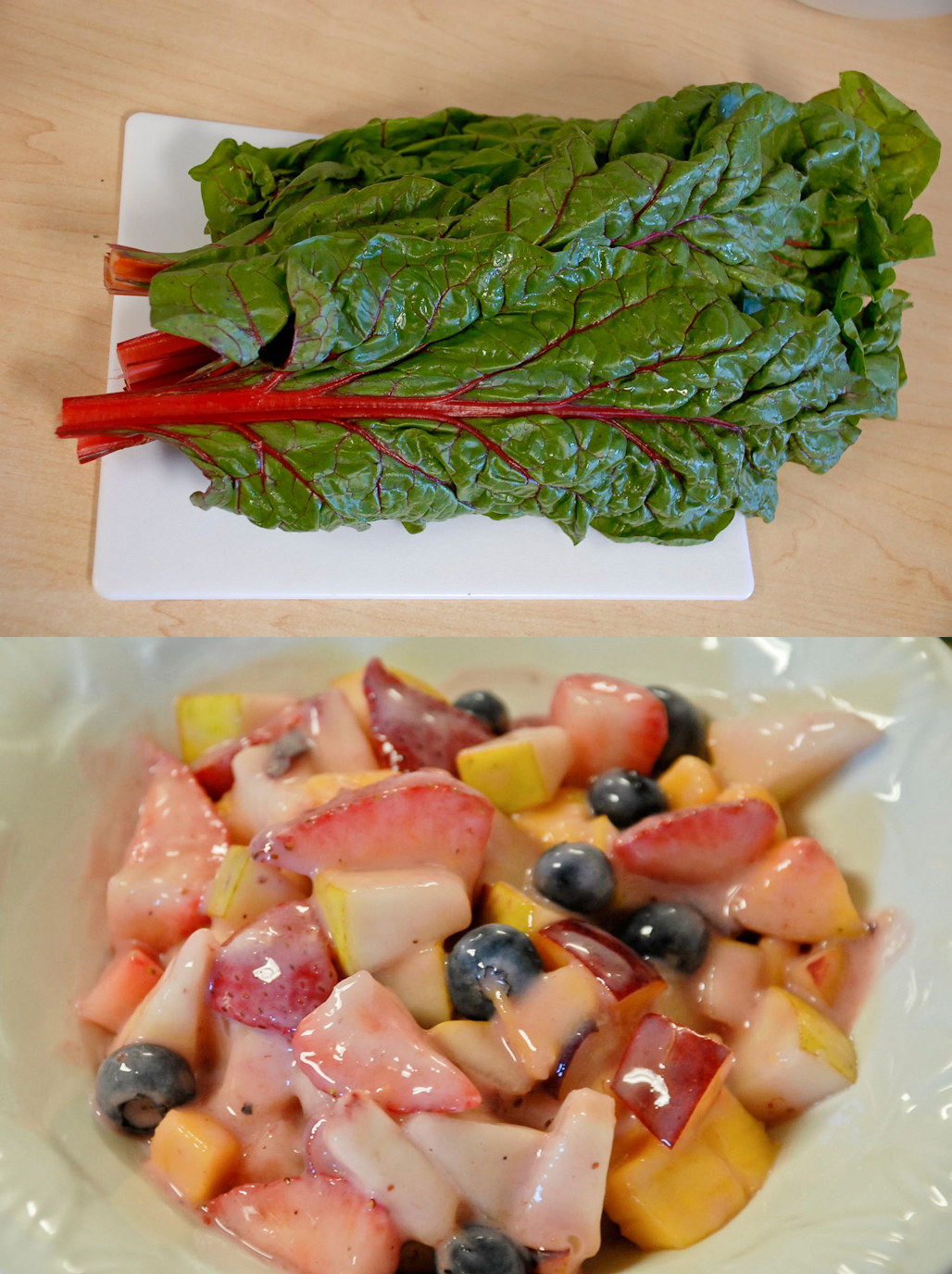
Fruit salad is a healthy substitute for the typical junk food of college students. |All photos courtesy of Bethany Linnenkohl
Fruit Salad
The weather has taken to the likeness of a wave with one day being in the high 80s and the next in the low 60s. Some days it feels like summer is still here as sweat drips down your back, while other days you might be feeling somewhat nostalgic about the change in season as the temperature drops drastically in Los Angeles — but don’t let that stop you from continuing to eat the dishes of summer.
One of the easiest, most rewarding and freshest dishes to make is fruit salad. As college students, we are known to stuff ourselves full of pizza, doughnuts, soda, cookies and all the things our parents tell us not to eat. Here’s the perfect healthy breakfast, mid-day light snack or dessert that is easy enough for anyone to make.
Ingredients:
-1 peach
-1 pear
-2 plums
-1 nectarine
-1/2 pint blueberries
-1 mango
-1/2 pound strawberries
-1 cup or so of raspberry or blueberry flavored yogurt (my favorites!)
Other fruits you could use:
-Pineapple
-Grapes
-Bananas
-Raspberries
-Oranges
-Blackberries
-Apples
-Shredded coconut
-A squeeze of lemon
Wash all of the selected fruits. Dice the fruits that need to be diced and take out the pits of the fruits that have them. Most berries can be left whole, though strawberries are better cut with their tops removed. Combine all of the cut fruit in a bowl. Add in the yogurt and mix until the fruit is evenly coated. Consume or store in a container.
Chard

Chard can be eaten raw or sautéed in olive oil. | All photos courtesy of Bethany Linnenkohl
For plants, the color green equates to life. With the coming of fall, leaves turn brown and fall off with the colder temperatures. As we have been studying in my New Testament class recently, Jesus calls himself “the Life” in John 11:25 and 14:6. In him alone do we have life, that being, eternal life. In a much less significant way, the color green from chlorophyll that is found in vegetables, such as chard, is known to bring life. Its benefits for the body include detoxifying the body, aiding in rebuilding, replacing, and replenishing tissues, and helping rebuild and replenish red blood cells. Isn’t that great? Now you have other reasons to eat your greens beyond your parents telling you to! Raw greens are wonderful but there are some greens that I think taste better lightly cooked. Chard is one of them. You might be wondering what chard is.
Chard is a green leafed vegetable that is part of the beet
and spinach family and is known to have an earthy, pungent, bitter,
and slightly salty flavor. Chard is primarily leaves but it also has a brightly colored crunchy stalk.
How to prepare:
To lightly saute chard, coarsely chop the washed chard cutting the harder stalks smaller than the larger leafy section. Discard of the ends of the stems. In a saute pan, add a couple tablespoons of olive oil or butter. Basil, lemon, oregano, balsamic vinegar, minced garlic or red pepper can be added in at this time as well. Add in the cut chard, placing the thicker stalk pieces at the bottom of the hot pan. Cover the saute pan with a lid in order to allow the leafy tops to steam.
Stir with a wooden spatula often and watch carefully that the chard does not burn. As soon as the chard turns glossy or looks to have a wet sheen on it, salt and pepper to your desired flavor and remove from the heat. Serve immediately to your guests, share with your roommate or devour the whole pan by yourself. The traditional form of chard found in grocery stores is Swiss chard, but if you find rainbow chard, definitely give it a try. I find rainbow chard a little sweeter and a lot more fun as the stalks are bright yellow, pink, orange and purple.







